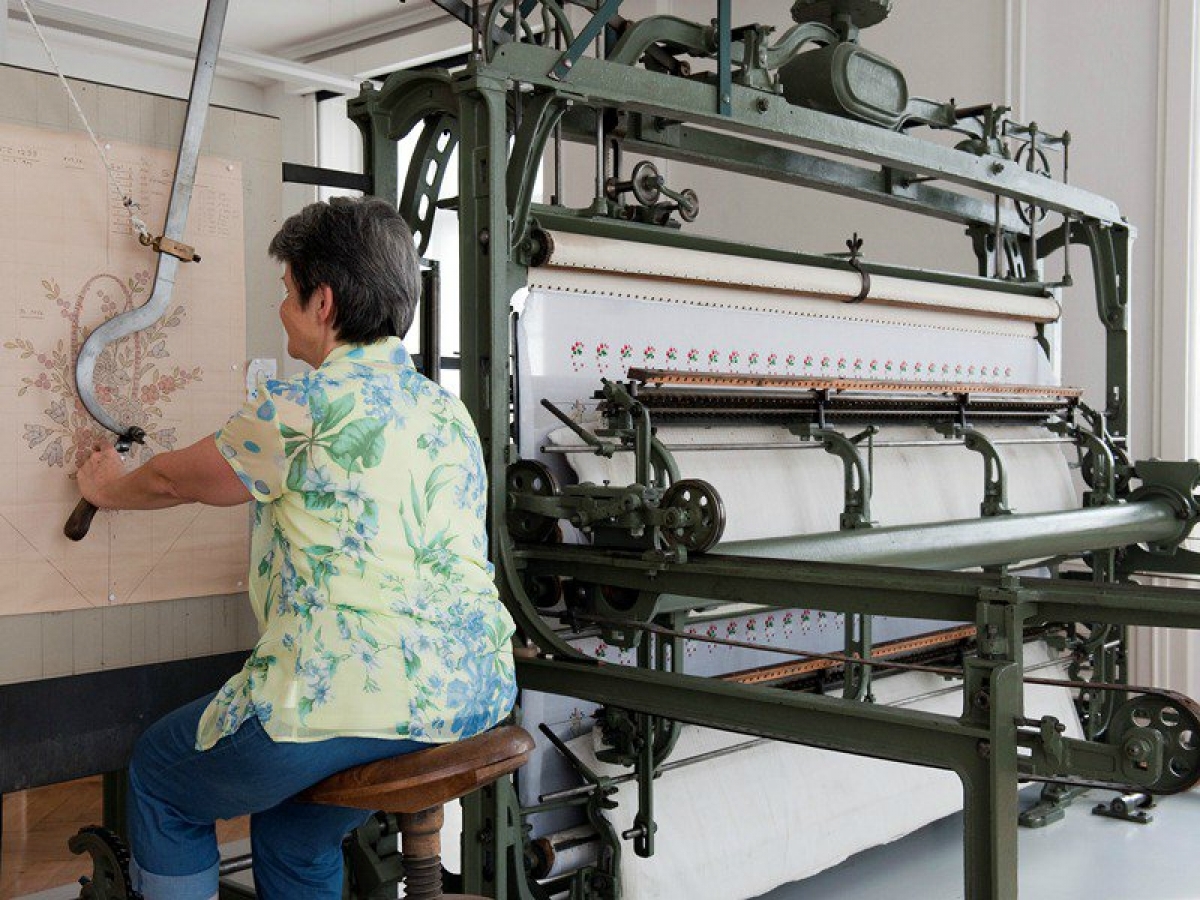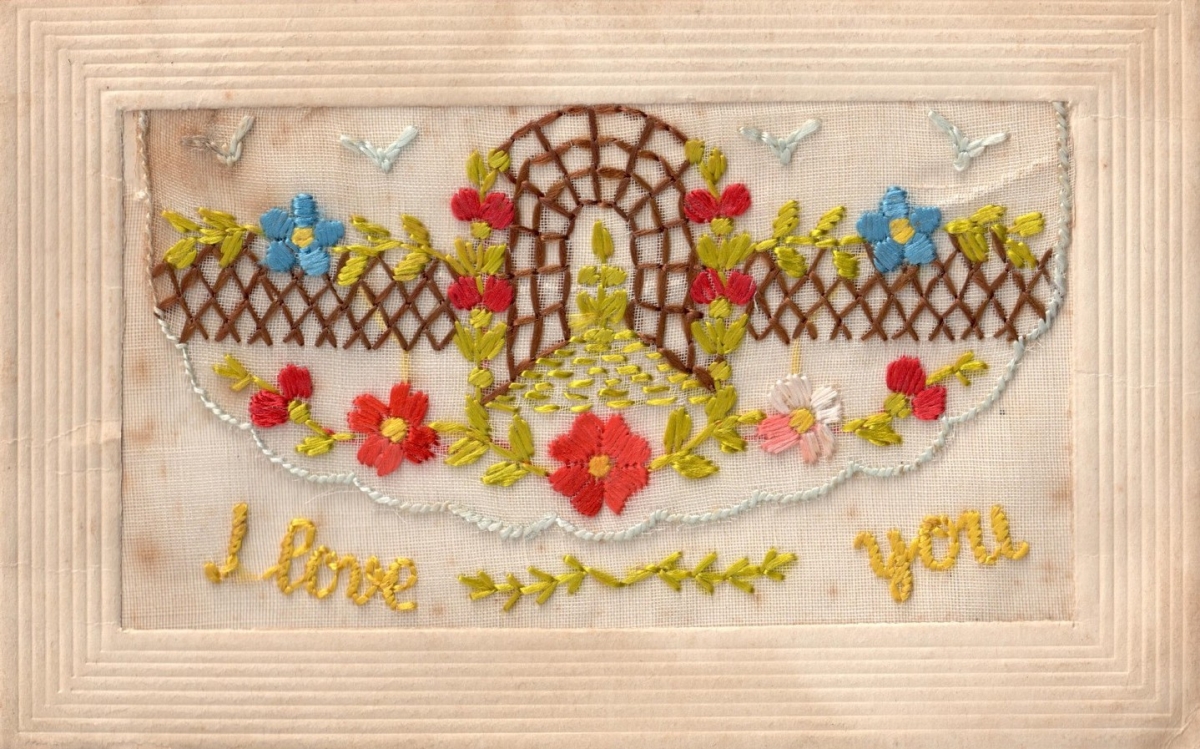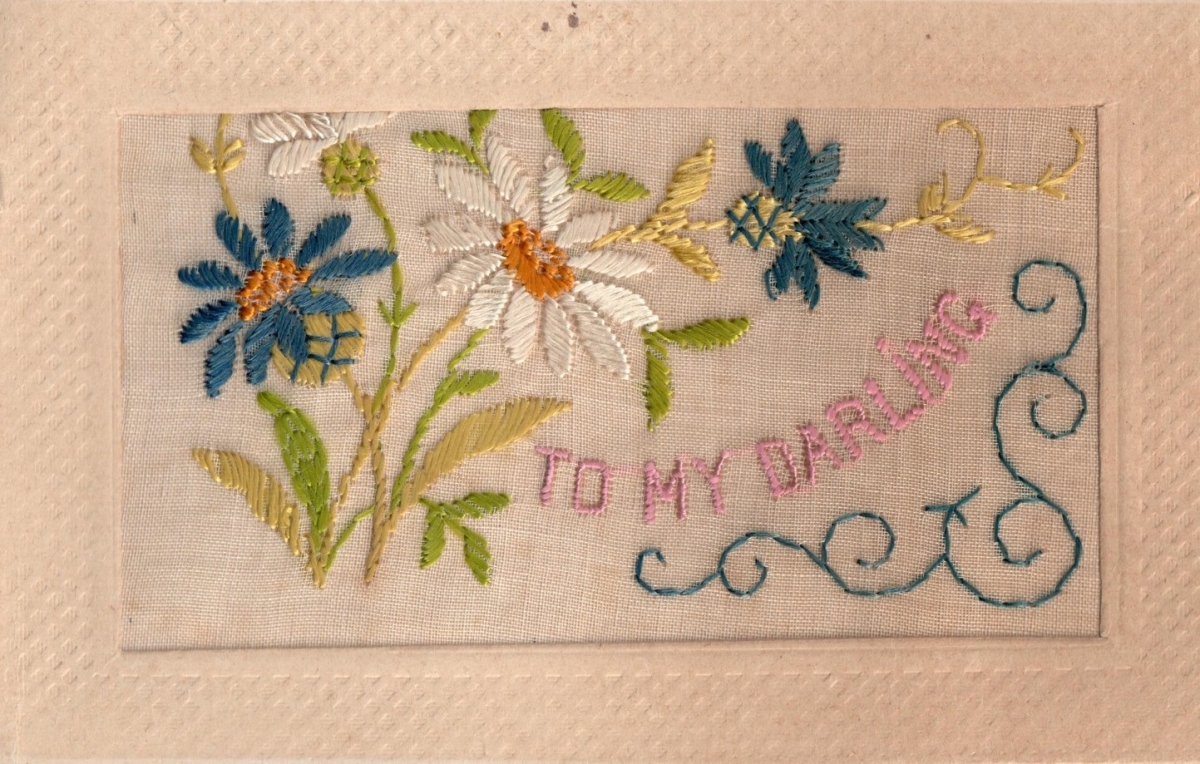Silk Embroidered Postcards
Silk embroidered postcards from the First World War
During the First World War, many Allied officers and soldiers based in France sent silk embroidered postcards to their loved ones back home, in particular to Britain and Canada. From 1917, when American soldiers had arrived in northern France, they also started to send these cards to their families and friends. Many of the cards were illustrated with patriotic symbols, flags, slogans, or sentimental texts.
The embroidery has often been said to be the work of Belgian and French refugee women, as a means to eke out a meagre existence. However, it is evident that the embroidery was carried out by commercial firms using hand embroidery machines. Such firms also produced embroidered cards for the German market, although with different symbols and texts!
The TRC would like to thank Dr. Ian Collins for his help in collecting various postcards and his help in writing the text.
For further information, see a TRC blog of 18 December 2015 and a special entry in TRC Needles.
Sources:
- COLLINS, Ian (2001). An Illustrated History of the Embroidered Silk Postcard, Radlett: Gabrian Antiques.
- COLLINS, Ian (n.d.). Embroidered silk postcards (website).
- LAFFIN, JOHN (1988). World War 1 in Postcards, Gloucester: Alan Sutton.
- RADLEY, C (1985). The Silk Postcard, Essex: R.F. Postcards (private publication).
- ROEBUCK, Malcolm J. (2000). Stevengraphs Bookmarks and Postcards, etc: World War 1 Postcards. Click here.
- STROBEL, Heino (2012). The Beginnings of Machine Embroidery in Saxony, available here [retrieved 5th July 2017].
Videos showing early hand-embroidery machines in use:
For this online exhibition:
- Author: Gillian Vogelsang-Eastwood
- Web-design: Joost Koopman
- Exhibition design: Willem Vogelsang
- Publisher: TRC Leiden.
- Year of publication: 2017.
- Copyright: All illustrations of objects housed in the TRC collection can be used free of charge, but please add to the caption: "Courtesy Textile Research Centre, Leiden" and the pertinent accession number of the object.







